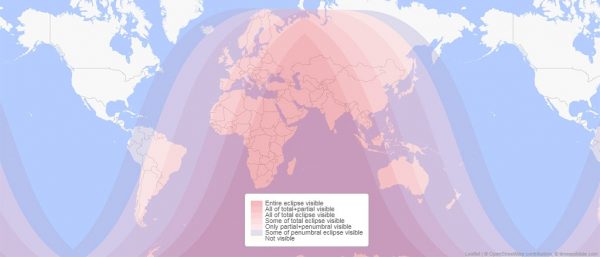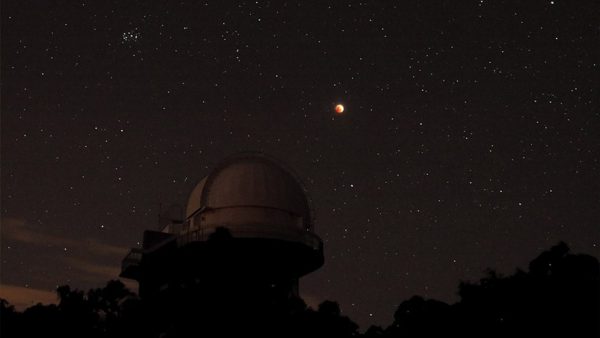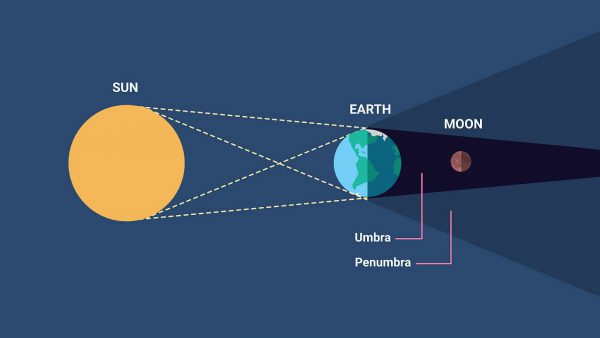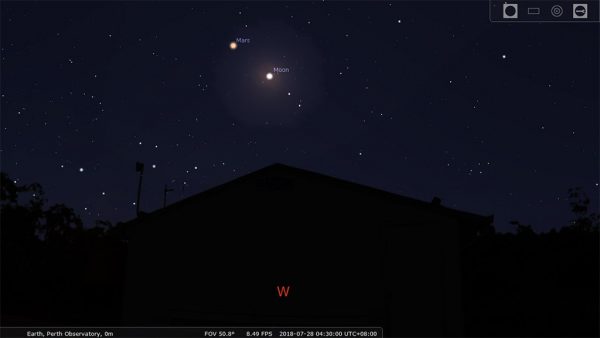How To See July's Total Lunar Eclipse
In the early morning of Saturday the 28th of July as most of us sleep, the Moon will pass within Earth’s umbra (Latin for “shadow”) in what’s called a total lunar eclipse. The eclipse will be visible in large parts of Australia, Asia, Africa, Europe, and South America and Perth will have a front row seat to the event.

Just like the total lunar eclipse back in January, this eclipse will be special but this time it’ll be special because it’s the longest total lunar eclipse of this century with the Moon turning a copper colour for an hour and 43 minutes. To add to this special event, this eclipse will occur on the same night that Earth passes between the Sun and Mars, placing Mars at opposition in our sky and it just happens to be right next to the Moon. This opposition is the closest since 2003 and there won’t be another close opposition this close until 2035. This is why Mars currently looks so bright at the moment and will continue to do so through August.
At the start of the eclipse, the Earth’s shadow first darkens the Moon slightly and then the shadow begins to cover part of the Moon, eventually turning the Moon an eerie copper colour. The copper appearance of the Moon is due to Rayleigh scattering where the blue part of the light hitting the Earth’s atmosphere is scattered by the nitrogen molecules and the red and yellow part of the light continues through the atmosphere and goes on to hit the Moon.
This eclipse will begin with the penumbral phase starting at 1:14 am (AWST) where the Moon starts to enter the outer edge of the Earth’s shadow (The Penumbra) and the Moon starts to dim. At 2:24 am (AWST) the partial phase begins where the Moon starts to enter the centre portion of the Earth’s shadow (The Umbra) and we’ll start to see a visible dark area grow across the Moon until at 3:30 am (AWST) when the Moon completely enters the Umbra which begins the total phase of the eclipse (Totality) and the Moon turns completely copper.
 |
 |
The total phase will be at its max at 4:21 am (AWST) and will finish as the Moon starts to exit the Umbra at 5:13 am (AWST). This will again start the partial phase and we will see the dark area slowly recede from the face of the Moon with it completely gone by 6:19 am (AWST). The Moon sets here in Perth at 7:17 am (AWST) so we’ll miss the last 11 minutes of the penumbral phase as the Moon completely leaves the Penumbra at 7:28 pm (AWST).
To see the lunar eclipse, just go outside and look at the moon as you don’t need a telescope to see it. If you want to go out and get some great photos of the Moon and Mars, places like the Swan River foreshore, Kings Park, Rottnest Island, Lake Clifton, Lake Leschenaultia, local beach and parks are all perfect places to take photos from as you’ll have great scenery for your photos as well.

Perth Observatory will again be live streaming the total lunar eclipse for timeanddate.com so the entire world can see this eclipse. To watch the live stream, you can click on the following link: https://www.timeanddate.com/live





